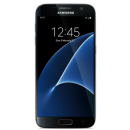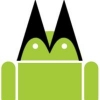Leaderboard
Popular Content
Showing most liked content on 03/28/2014 in Posts
-
3 pointsSuch wonderful freebies coming up once in a while.. no wonder this thread has gotten so popular ! Infact, sometimes i love seeing ppl asking for these freebies in diff-diff styles, without sounding overly desperate. And sometimes, they give an impression as if they're doing the giver a big favour, by 'taking it'. I guess, its only human to get excited when offered freebies & its best to be real like @shanusmarty who had no qualms in expressing the same. Just an observation.. enjoy the freebies guys.. !
-
3 pointsWithout knowning the details of your pendrive / OS etc, there are these generic options:- 1. Check if there is a physical write protect switch on the pendrive. This is usually a small switch with lock icon 2. Do a low level format using either dos shell and format & fdisk if required, or in a linux terminal (mkfs.vfat & fdisk if required to remove partitions and recreate partition) If you don't want to format Try chkdsk p: /F /X (p: is your drive letter of pendrive like e: or d: ) in dos shell. You can also try to Boot windows in safe mode (press F8 repeatedly when it starts booting and choose safe mode with command prompt and then do the format Try HP USB Tool if you can't do the above: http://www.softpedia.com/get/System/Hard-Disk-Utils/HP-USB-Disk-Storage-Format-Tool.shtml Try this tool: youtube.com/watch?v=pOhUUwC70B0 (i have not used it. Just came up in google search) 3. Check registry key: HKEY_LOCAL_MACHINE\SYSTEM\CurrentControlSet\Control\StorageDevicePolicies. The value 'WriteProtect' should be absent or set to '0'. Search on google or see the following two topics for more details: http://davidkramer.wordpress.com/2009/03/23/sd-card-write-protection-problem/ http://m3rlinez.blogspot.in/2007/01/just-rescued-my-write-protected-usb.html
-
2 pointsSprint HTC One MAX GSM SIM UNLOCK Source theslimed2013 is the author of this UNLOCK Your phone has to be rooted and S-OFF How to root and S-Off Install Root Explorer & Sprint HTCOne SIMUnlock Helper Download the attached file HtcOMADM_SPCS.apk Now this app should go into /system/app/ directory, Make sure you rename the app that is already present in your phone and only then place this file there. One placed make sure you change permissions to rw-r-r and then reboot. Run the SimUlock helper app, this might give you "DEVICE CHECK FAIL" in Red, Might also say "Device is not a Sprint HTC One! There for this Program will not run", IGNORE. Select 3 Menu dots on the upper right hand side and select "Display Sim Unlock Log", Grant permissions by superuser if asked. You should get empty Sim Unlock Log, Hit back button, wait for it to say "Device verified" Root available bla bla bla. Select "Start" and wait for OMADM Test Client to start, once the OMADM Test Client starts scroll down till SIMLOCK and select it, Wait for a few seconds. Phone should return to normal select back, Sim Unlock Helper should show Sim Unlock Results, if it says Successful, reboot the phone. if the app reboot does not work, use the phone reboot menu. DONE. Pop in your GSM SIM, set APN, data should work. Credit goes to garynsa for showing this thread and trying to confirm this method.
-
2 pointsMicrosoft Office Mobile free for Android. https://play.google.com/store/apps/details?id=com.microsoft.office.officehub
-
2 pointsFor DAC to start with you can use Cambridge DACMAGIC PLUS this can link up with your current driver Optically. can go wireless also, you can also connect a NAS to this. in NAS you can store all your digital music. The best setup till date i have seen in my life cost him around 20+lacs to set it up !! im talking about ONLY AUDIO !! and all my knowledge about audio related hardware is from this guy will give a detailed explanation about the setup with pics in the next post !!
-
2 points
-
2 pointsHTC One (M8) will work on Indian 4G LTE networks Source The just announced HTC One (M8) will work on 4G networks in India. The company has confirmed the units sold in India would support TD-LTE in Band 40 (2,300MHz), which is the band on which Airtel operates its 4G networks and RIL’s Jio Infocomm would launch its 4G network. At the moment, 4G connectivity on smartphones is only available on Airtel’s network in Bangalore. HTC has also confirmed that One (M8) users will be able to access 4G LTE networks in other countries as well, though there is no clarity at the moment about which all countries it would work. The One (M8) would launch in India in the third week of April. HTC has not yet revealed the price of the device in India at the moment. The One (M8) is the successor to the One and features a 4-UltraPixel Duo Camera on the rear that enables users to change the focus in any photo after it is clicked, providing users with shoot first, focus later functionality. It also has a 5-megapixel front facing camera with BSI and auto-focus for selfies. It runs on Qualcomm’s Snapdragon 801 quad-core processor clocked at 2.3GHz, 2GB of RAM, 16/32GB internal storage, microSD card slot and a 2,600mAh non-removable battery.
-
2 points
-
1 point@ Mods I deliberately started this thread in General Chat. If you think this is wrong place, please move this thread to appropriate section. Later please remove this lines. In recent past, there has been brief bouts of discussion on RIMWeb about pollution, carbon footprints and global warming. Today it just stuck in my mind that there are so many electronic things which we buy, use and change even when useful life is left. For example, today I bought wireless KB + Mouse just to replace perfectly working keyboard and minor problem in mouse. Means if not mouse, atleast keyboard can be used by some one. New pair cost about 1800 bucks. Only keyboard may be costing about 1000 bucks and mouse alone may be the same. So I thought, what if I send or give it to some one who is about to buy new key board or may be he needs to buy keyboard. In any case I am not going to use it and it will be scrapped after some time. Hence I decided to post a thread where I will be sending this pair of Logitec pair of mouse and KB free. I will only charge for actual courier charges. Trusted Rimwebian may pay me once they get the stuff. Other people may pay me in advance. Also this thread is to be used for free give away without any obligations on either side. Please do not post if one is really not interested to give away free. If I get proper response, I am going to offer following thing: 1. BSNL ADSL + Wifi router 2. may be I have few chargers and data cable for various phones. 3. Some working computer hardware parts like HDD, RAM, graphic / modem cards etc. Will prepare list and post. All are invited to post their old stuffs too.
-
1 pointSprint Moto X & any Moto G Flashed to Reliance CDMA FINAL Photo Tutorial Updated:- 08/04/2014 New Method Works 100% Follow easy to use , Modified Photo Tutorial http://www.slideshare.net/hambarde/moto-g-ver3final _________________________________________________________________________________________________ Tested on Verizon and confirmed to be working on Boost model. 1) First we need working wifi connection on phone 2) Then an APK from this link >> http://www.mediafire.com/download/i038c12rrdcbtlj/SPCUtility.apk 3) Allow this MSL app to use WiFi, 4) It gives you SPC, [Works on Verizon and Boost both] [Also works with sprint Moto X] 5) for boost Moto G and Sprint Moto X ##diag# works, but dose not work for Verizon. 6) For verizon Diag , Turn off mobile, remove usb cable, and Press both vol key + power button. 7) As soon as you leave these keys , one menu will pop-up. 8) use vol down keys to select BP Tools then connect use cable. 9) then press vol up . Phone will boot normally with DIAG turn ON. 10) for Boost ##diag# require SPC, which you will get it by SPC apk. 11) now PC will search for drivers (even latest moto driver pack dont have drivers for this) 12) attaching drivers for moto g DIAG. (install it manually) 64Bit Drivers | 32Bit Drivers 13) Use DFS, send SPC. and Put phone in Offline-A mode 14) then you need to change phone and min number to any 1234567890 to change PRL 15) till that time PRL wont change, 16) From DFS you can write AKey. 17) But for data need to use DUMP file, 18) you can use CW nv item write and write DATA DUMP, use free NV Item writer from CW http://www.cdma-ware.com/workshop/nv-items/NV-items_reader_writer.rar (get CW3.6 Dump after registration) here also need to put phone in Offline-A mode before writing DUMP to phone 19) after writing all above, go to DFS and change Min and MDN to ZERO so you will be ready for activation (*228). 20) As you always do - Hit Like UPDATE :- If phone is on 4.3, then you should first update to 4.4.2 then do above steps, other wise you need to redo data settings and might have to flash PRL again. Here are official drivers from Motorola http://www.mymotocast.com/download/MDM?platform=windows I have not tested it but hope this works. These official driver dont work, use above 32bit or 64bit drivers Update : 19/03/2014 1)32bit Drivers mention in point no -12 are tested on WinXP 32bit and on Win7 32bit 2) 64bit Drivers are tested on Win7 & 8 64bit. 3) After factory reset, Min and akey stays as it is, But need to re-configure DATA and PRL. 4) One Click update to 4.4. for boost works perfectly from fastboot mode. Link [and it takes only 10min to update from 4.3 to 4.4.2] 5) Need to reconfigure PRL and DATA after one Click update [same as updating on Wifi] Update 25/03/2014 Photo tutorial [Drivers and Sending SPC] LINK removed, use link on top Update 08-04-2014 (use link on top) Photo tutorial [ Till voice and sms configuration] Data config will be updated sooooon...... LINK removed, use link on top Update :- 14apr14 Getting many msg about not finding software for using tutorial so here are all the software required Dfs demo http://cdmatool.com/downloadFiles/application/Setup%20DFS%2014.03.26.0.zip Nv writer 3.6 http://www.cdma-ware.com/workshop/nv-items/NV-items_reader_writer.rar Spc apk http://www.mediafire.com/download/i038c12rrdcbtlj/SPCUtility.apk 32bit drivers moto g & x https://www.mediafire.com/?ic25458youq1xd9 64 bit drivers https://www.dropbox.com/s/ucr03xx6esqtcdc/DroidX_Diag_x64.rar Moto G MTP Drivers For Win XP SP3 [Modded by Me] https://www.dropbox.com/s/37hpk21lc26h78i/wpdmtp.inf Sent by Moto G on Reliance CDMA DroidX_Diag_x64.rar
-
1 pointCall Conference Trick on Motorola Droid 2 & Droid 2 Global (Might Work on Photon & other Handsets as well)----- Create a contact with name 'A and save number 3, 1. all seperate. For Example Name - 'A Mobile - 1 Home - 3 And call the 1st person, after call connects. Add call and dial the second person. When your call connects, press home & open contacts. Open 'A and select/Dial 3 to call conference. And same way you can press home, Open contact 'A & Select/dial 1 to disconnect last called person. Please give me +1 if this works for you & Helps you. Thanks.
-
1 pointBy exploiting basic human nature to fall for unbelievably cheap price offers! As mentioned here by other posters, most probably it will be a cheap chinese clone phone if at all it is received. (Same experience also mentioned by many people in other online reviews) Just type "Kaunsa Fraud" in google search & be aware of huge number of people who have never received either the product / refund OR got fake ones & defrauded by Kaunsa. It looks like Timtara Version 2.
-
1 pointSbi approved my creditcard request base on student account.50rs account. Sent from my LG-LS970 using Tapatalk 2
-
1 pointThis looks like a copy phone ... no where its mentioned Samsung Note 3
-
1 pointI had been contemplating on getting a new phone for months. I liked varied things on different phones battery, camera, design, screen, interface. Needless to the priceless was over whelming on the ones I liked. Lenovo were value for money but didn't match my taste. I had read about moto g ever since it hit the news but never thought of getting one myself. When I saw eBay usa boost version for just $89 and Hitesh Bhai starting dedicated thread. I thought I have ample appetite to take a risk chance. Been using it for a week on Wi-Fi and today it got activated on reliance. I simply don't have words to express my delight about the whole experience. It's neat prompt clean efficient handy. Camera is so so but not needed by me. Internal memory is too less but manageable. Thank you Motorola Google Boost RIMweb and Hitesh Bhai. Sent from my XT1031 using Tapatalk
-
1 pointBTW it will throw vdm errors on startups, if the original apk is not retained after the unlock. Be sure to do that. Had tried once on my firend's Sprint HTC one Max. Warning: Fingerprint scanner will stop working once unlocked using htcdev method. So make sure you relock the bootloader using this.
-
1 pointJust now received Macbook pro retina 8gb and 256 GB SSD 13.3 " http://store.apple.com/us/buy-mac/macbook-pro?product=ME865LL/A&step=config
-
1 pointAs posted by arun sir here is underground cable on Jamnagar bypass through Horizontal drilling machines Sent from my SCH-R830 using Tapatalk
-
1 pointFor the Noob mobile phone user or even those who have seen the jargon making the rounds but couldn't really understand what they meant, here is a quick guide to the most commonly used abbreviations and terminology used in the mobile phone segment 3G – Third Generation mobile technology will allow users to get a better host of services and connectivity speeds from their service provider. That means download speeds on mobile devices will be faster as well as data and media streaming. 3GPP - 3rd Generation Partnership Project can be construed to be a combination of all GSM, GPRS/EDGE and W-CDMA specifications. A-GPS – Assisted Global Positioning System allows for a quicker mode of gathering required satellite information via the internet via servers. GPS enabled handsets can get information without the use of A-GPS however it would take a little longer. In order to use A-GPS you would of course require a working internet service on your mobile handset via your service provider. Android – Developed by Google and part of the Open Handset Alliance now, Android is not just an operating system but a software platform as well. It's based on the Linux Kernel, which is quite synonymous with free or open source software. Developers will also be able to write codes for developing new applications for the OS with Java. The first Android powered handset was HTC's G1. Android has become extremely popular today, with devices powered by the OS providing stiff competition to Apple's devices. In case you're not familiar with them, here's a list of the codenames used for Android OS versions. Donut - Version 1.6 Eclair - Version 2.0/2.1 FroYo - Shortened form of Frozen Yoghurt, Version 2.2 Gingerbread - Version 2.3 Ice Cream Sandwich - Supposedly Version 2.4 Honeycomb - Version 3.0, optimized for tablets. ROMs A stock ROM is the official, signed software version from a phone manufacturer that will either come on the device when you buy it or will come in the form of an update. Custom ROMs, however, are either altered version of this software or modified versions of Google's stock Android software. So what does the "customized" part mean? Since Android is open source, developers are free to take stock ROMs, modify them, strip them of garbage, optimize them, add things, and pretty much do whatever their imagination and skills allow. Here are the steps for installing Custom ROMs, at a glance : Root Your Phone Install ROM Manager App Back Up Download the ROM you want to try Flash It Want to go back? Restore It "Rooting" your device means obtaining "superuser" rights and permissions to your Android's software. With these elevated user privileges, you gain the ability to load custom software (ROM's), install custom themes, increase performance, increase battery life, and the ability to install software that would otherwise cost extra money (ex: WiFi tethering). Rooting is essentially "hacking" your Android device. In the iPhone world, this would be the equivalent to "Jailbreaking" your phone. BREW - is Qualcomm's open source application development platform for wireless devices equipped for CDMA technology. Bluetooth – A wireless method of communion between devices for either data transfer or remote access and control. Bluetooth 2.0 + EDR – Bluetooth (BT) with Enhanced Data Rate offers faster rates of communication between Bluetooth enabled devices. A2DP - Advanced Audio Distribution Profile allows Bluetooth enabled media devices to communicate with receivers in Stereo Bluetooth headsets for better audio experiences. AVRCP - Audio/Video Remote Control Profile allows BT enabled devices to communicate and control and interface with other BT enabled devices not just for data transfer but in a more in-depth sense. For example one can control your PC's media player via Bluetooth from a mobile handset equipped with Bluetooth that also has an AVRCP profile. BTS - Base Transceiver Station; the network entity which communicates with the mobile station. CDMA - Code division multiple access is another form of mobile/cellular technology that allows users to use the entire spectrum of frequencies available that are capable of providing better sound and data communication. Some CDMA handsets have built in SIM cards, so specific handset models have been designed for this technology. The range of mobile handsets available with CDMA, are a little more limited as compared to GSM. CDMA is a military technology first used during World War II by English allies to foil German attempts at jamming transmissions. For more info you may want to check out Basics about CDMA / EVDO CMOS Sensor – Complementary Metal Oxide Semiconductor are most widely used in mobile handset cameras. The reason for this is because these sensors require fewer components (perfect for space constraints) and lesser power so it also reduces the cost. Core - A core, in its basic terminology, is a distinct CPU. Any singular core is capable of executing all of the necessary computations and instructions to ensure a smartphone can function at all. Learn more about Single Core / Multi - Core chips and find out whether you need them here. Displays TFT LCD - Thin Film Transistor Liquid Crystal Display. TFT LCD type screens are also used in TV's and computer monitors. QVGA – Quarter Video Graphics Array is 240 x 320 pixels, this is pretty standard for most mobile handsets VGA - Video Graphics Array is 640 x 480 pixels for handsets with larger displays WVGA - Wide Video Graphics Array 800 x 480. OLED - Organic Light-Emitting Diode. Nokia's N85 uses this type of display. AMOLED - Active Matrix OLED. An enhanced version of OLED screens, AMOLED screens used very commonly now, in phones like Nokia's N8. Active-matrix OLED displays provide higher refresh rates than their passive-matrix OLED counterparts, and they consume significantly less power. Super AMOLED - Super AMOLED refers to touchscreens where the layer that detects touches is integrated onto the screen rather than being a layer on top of it. This leads to increased brightness and clarity. The Samsung Galaxy S bears this type of screen. Super AMOLED Plus - First introduced with the Samsung Galaxy S II series smartphones, is a further development where the PenTile RGBG pixel matrix is replaced with a common RGB subpixels arrangement, going from eight to twelve subpixels in a group, resulting in finer details. The screen technology is also brighter, thinner and 18% more energy efficient. Retina Display - First used in Apple's iPhone 4, the Retina Display is an IPS LCD screen that packs has a very high pixel density (number of pixels per inch), making it very hard for the naked eye to distinguish between pixels and therefore leading to seemingly higher quality. EDGE - Enhanced Data rates for GSM Evolution can also be called EGPRS or Enhanced GPRS and means exactly what it states. It's one step above GPRS and provides for a little faster browsing and data transfer speeds. ESN - An ESN is a numeric identifier that uniquely identifies a CDMA phone. The ESN is what a CDMA network uses to identify a phone and determine which subscriber's account, if any, it is linked to. Because of this, when switching from one phone to another, subscribers will have to provide the ESN of the new phone to the network carrier before it can be activated. The ESN is being phased out in favour of the MEID. This is happening because phone manufacturers are literally running out of ESN identifiers. FDMA - Frequency Division Multiple Access-a transmission technique where the assigned frequency band for a network is divided into sub-bands which are allocated to a subscriber for the duration of their calls. GSM - Global System for Mobile communications (originally from Groupe Spécial Mobile). To cut a long story very short is the technology that allows for mobile handsets to connect to service providers using any model phone or any service provider anywhere in the world. GSM handsets can be used with SIM cards. GPRS - General Packet Radio Service is universal as a mobile data service (packet) for 2G and 3G networks. It provides data rates from 56 up to 114 kbit/s of information when connected to the net via the mobile handset's browser. HDMI - High Definition Multimedia Interface : A standard for audio/video cables and connectors. HDMI supports and carries high-definition (HD) video and multi-channel audio over a single cable. It carries an all digital signal, ensuring high quality. Some phones have a Mini-HDMI (Type C) or Micro-HDMI (Type D) connector to allow the phone to be connected directly to a television, so that video content on the phone can be played back on a full-size television screen. This requires a HDMI cable with a Mini or Micro - HDMI connector on one end and a full size (Type A) HDMI connector on the other end. Hot Swap Slot – A memory card slot that's accessible without having to remove the battery or the rear panel. Some handsets do have a memory card slot just under the rear panel that but you won't need to touch the battery. This could also be termed as a Hot Swap Slot. HSCSD - High-Speed Circuit-Switched Data implies four times faster data transmission for mobile for users using GSM with rates up to 38.4 kbit/s. It's basically high speed implementation of standard GSM transfers. HSDPA - High-Speed Downlink Packet Access is often associated with 3G. It allows networks to provide higher data transfer speeds and capacity. Current HSDPA deployments support down-link speeds of 1.8, 3.6, 7.2 and 14.4 Mbit/s. iDEN - is a mobile telecommunications technology, developed by Motorola, which provides its users the benefits of a trunked radio and a cellular telephone. iDEN places more users in a given spectral space, compared to analog cellular and two-way radio systems, by using speech compression and time division multiple access (TDMA). IR – Infra Red is slowly being phased out these days with BT taking a bigger and more active role in a mobile handset's wireless mode of data transfer and communication. IR means having to keep two handsets aligned with their IR receivers facing each other or 'in line of sight' whereas Bluetooth doesn't not have such limitations and is faster as well. Jailbreak – Jailbreaking means hacking into the core system of the iPhone so as to allow users to gain access to areas that were otherwise closed off (Unix File system). Keypads QWERTY – A full QWERTY keypad is a mobile keypad that would allow you to visualize and use this type of mobile input system as well as you would a desktop PC's keyboard. Each company tries to design their handsets keypad to mimic a PC's as best as they can. SureType - or Half QWERTY keypad are essential the same. SureType is more specific to BlackBerrys. Virtual Keypad - is an On-Screen keypad which is specific to handsets with touchscreens. These are also available in QWERTY, SureType or Half QWERTY as well as normal alphanumeric options. Swype - Swype is a virtual keyboard which allows users to enter words by sliding a finger or stylus from letter to letter, lifting only between words. It uses error-correcting algorithms and a language model to guess the intended word. It also includes a tapping predictive text system in the same interface. LTE - Long Term Evolution is the name given to a project associated with 3GPP to help improve and perhaps even standardize future mobile technology. A lot of devices that supported LTE connectivity were launched at CES 2011, but were marketed as 4G-enabled. Interested? Follow more about LTE here Mail for Exchange – A more up scaled version of Push Mail would be Mail for Exchange. With an application being installed on the handset itself, this service would also download your emails in a real-time environment and also sync and integrate with your Contacts list and Calendar. Much like having MS Outlook on your mobile. MEID - An ID number that is unique for each new CDMA mobile in the world. It identifies the phone to the network. MEID is a replacement for ESN. It began replacing ESN in 2005 since the pool of ESN numbers has been virtually exhausted due to the number of devices in use. It is equivalent to IMEI in GSM phones. Memory Cards Secure Digital Card (SD card) - SD cards are used in many small portable devices such as digital video camcorders, digital cameras, handheld computers, audio players and mobile phones. In use since 1999, SD Memory Cards are now available in capacities between 16 Megabytes and 1 Gigabyte, and still growing. An SD card typically measures 32 mm x 24 mm x 2.1 mm and weighs approximately 2grams. MiniSD Card - After the success of the SD Card (Secure Digital Card), the miniSD Memory Card was developed to meet the demands of the mobile phone market. The MiniSD Card provides the same benefits as the SD Card, but is smaller than the original SD Card. MiniSD Cards are typically found in many newer mobile phones with features such as built-in digital cameras, downloading and games, basically the mobile phones where the miniSD can meet the requirements for increased data storage. MiniSD cards are 21.5 mm x 20 mm x 1.4 mm and generally provide 16MB to 256MB of storage. MicroSD - Mainly used in mobile phones and other small handheld devices the MicroSD format is currently available in capacities up to 4GB, and it roughly 1/4th the size of the SD card at 15mm W 11mm W 0.7mm. The MicroSD card is also the smallest memory card available. Card adapters can be purchased that enable backwards compatibility — this would allow MicroSD cards to work in SD and MiniSD slots, and also for MicroSD cards to work in SD card slots. MultiMediaCard (MMC) - The MultiMediaCard (MMC) standard was introduced by SanDisk and Siemens in 1997. The card itself is 32 mm x 24 mm x 1.4mm and is often used in place of the SD card. Transfer speeds of a MMC is around 2.5MB/s and they can often be used in SD Card readers. Sony Memory Sticks - Sony Memory Sticks are light, compact and designed for a wide variety of devices including digital cameras, recorders, and more. With the use of an adapter most Sony Memory Sticks can be used with almost all Memory Stick PRO compatible products. Memory Stick Micro (M2): 15 mm x 12.5 mm x 1.2 mm Memory Stick PRO: 50 mm x 21.5 mm x 2.8 mm. The Memory Stick PRO format has an an 8-bit parallel interface with theoretical transfer rates up to 480Mb/s. It is commonly used in high megapixel digital cameras and digital camcorders. Memory Stick PRO DUO: 31 mm x 20 mm x 1.6 mm. The Memory Stick PRO Duo media is about one-third the volume and half the weight of standard-size media, but offers all the advanced functions of Memory Stick PRO media. Multi-Touch – This term is applied to specific usability on touchscreen mobiles that allow for specific actions. For example – the pinch to zoom feature in the Apple iPhone. It's a more sophisticated touchscreen feature that has hardware and software working simultaneously to recognize more than just one point of contact with the screen and responding to the same. Most touchscreen handsets' UI will not permit the use to multiple contacts with the screen to activate features and function. Nav-Pad or D-Pad – This refers to the five way navigation pad that's usually located under the display and can be used to maneuver through menus and settings. The center key is for selecting options. Nokia also uses what they call a Navi-Wheel that's similar to the iPod's Click Wheel. It's soft touch scrolling in a circular motion for moving around a menu system. NFC - Near Field Communication allows for the wireless communication to take place between mobile devices with a very fixed radius of about four inches. This system is not unlike BT or IR but it does have the limitation of distance. Read more into NFC here! Podcasts – Podcasts are either video or audio snippets on various topics uploaded to the net via individuals, corporations, radio stations etc. that can be downloaded for playback on a mobile handset via an active internet connection. They're usually in the form of web feeds. PRL - is a database residing in a wireless (primarily CDMA) device, such as a cellphone, that contains information used during the system selection and acquisition process. In the case of RUIM-based CDMA devices, the PRL resides on the RUIM. The PRL indicates which bands, sub bands and service provider identifiers will be scanned and in what priority order. Without a PRL, the device may not be able to roam, i.e. obtain service outside of the home area. Proprietary Ports – As the name implies, it's the connectivity port for a handsfree, charger or USB that is design-specific to a single company's brand of handsets. It's also one of the more irritating aspects in the mobile phone industry. With a standard port, users can simply use wires from other products and vice-versa instead of hunting for a very specific wire that in most cases is only available with the handset manufacturer who would probably charge a premium rate. If you are confused about cables and wires, this topic may prove helpful - Guide to PC's cable and Wiring Push Mail – This service allows a handset with an active internet connection and support for the same to always download new messages from a designated server linked to your personal email address. What this means is, a real-time download of all incoming emails to your mailbox which you can access from your mobile as well as your PC. Pwnage – To be Pwned is the same as street slang for 'Owned' i.e. to be taken for a ride (in some cases) or to be to be controlled against your will. In the world of the iPhone to have your iPhone Pwned, would mean to jailbreak it and gain access to all areas. A Pwnage tool is required to do just this. RDS – Radio Data System is a very frequent term attached to the FM radio capabilities in a mobile handset. It's a method of transmitting small but useful snippets of digital information via the radio's frequencies that would include Track name, name of the artist etc. SAR (Specific Absorption Rate) - A cell phone's SAR, or its Specific Absorption Rate, is a measure of the amount of radio frequency (RF) energy absorbed by the body when using the handset. All cell phones emit RF energy and the SAR varies by handset model Read more here. Series 40 and Series 60 – S40 or S60 are mobile User Interfaces (UI) that work with the Symbian Operating System. S40 UIs are usually found in some of the lower end Nokia handsets and S60 can be found in some of the more advanced. Nokia has launched a touchscreen version of their Series 40 UI and of course, you'll all be familiar by now with the 5800 XpressMusic that uses a S60 touch based UI. Nokia's N8 had a new version of their Symbian UI, named Symbian ^3. Tap-Screen/SurePress - The latest in touchscreen technology is RIM's offering in their BlackBerry Storm 9500. While the UI works quite like any other touchscreen interface with response to touch by sliding your fingers across the screen; in order to actually activate major functions or selections, the screen itself can be pressed, not unlike a normal button on a keypad. This technology is what we call Tap-Screen and what RIM calls SurePress. UIQ - User Interface Quartz, is essentially a platform based on the Symbian Operating System (OS). A variant of sorts. Later versions are used in handsets that have touchscreen interfaces. The UIQ platform also allows for plenty of development and also supports Java. UMTS - Universal Mobile Telecommunications System is one of the 3G mobile cellular technologies. Also understood as 3GSM in many cases, it essentially implies a sort of hybrid combination of 3G with its speed and GSM with a more globalised standard. Unlock – Unlocking carrier locked phone implies you would be able to use it as an open GSM handset so that it would no longer be tied to a single carrier. You'd be free to use any service provider's SIM card and services attached to the same without disrupting the use of the handset in any way. USB – Universal Serial Bus is simply a wired standard used for interfacing between a mobile handset and a PC for various purposes be it media and data transfer, backing up of information or even recharging the battery. Mobile phones usually have this in mini-USB and micro-USB variants. VOIP - Voice over Internet Protocol, in the simplest sense, implies the ability to make voice calls over the internet. In a mobile phone it would mean the ability to make a call using Wi-Fi, EDGE or any other internet service the handset permits. WAP - Wireless Application Protocol is simply the system used by a mobile handset to connect to the internet but it's a little more 'strictly' basic when compared to GPRS or EDGE. W-CDMA - Wideband Code Division Multiple Access is another type of 3G network. Wi-Fi - is a mode of wireless connectivity but with a stricter sense. It allows for mobile handsets to connect to Wi-Fi routers in a certain area for quick and high speed internet connectivity. WiMAX - Worldwide Interoperability for Microwave Access is a wireless digital communications system intended for much larger areas as compared to Wi-Fi. It can provide broadband wireless up to 50 km for fixed stations, and 5 - 15 km for mobile stations. Wi-Fi on a much larger scale like EDGE/GPRS with broadband speeds. Commonly Used Abbreviations with CDMA MIN - Mobile Identification Number ESN - Electronic Serial Number PRL - Preferred Roaming List SID - System Identification Number SCM - Station Class Mark CAI - Common Air Interface A Key - Authentication Key NAM - Numeric Assignment Module SPC - Service Programming Code Sourced part of the info from tech2, webopedia. Feel free to add new terms to this topic Edit : Updated with more terms..
-
1 point















